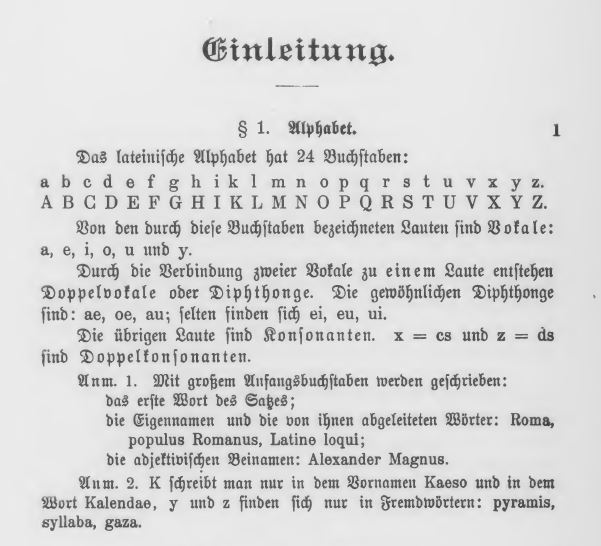This question concerns a text written in what I think is the Gothic script, specifically Lateinische Grammatik by Friederich Ellendt et al., in which letters seem to be used in very strange ways.
It seems to me the fourth line of the body may read:
Von den durch diese Buchstaben bezeichneten Lauten sind Vocale:
If that is right, 'B' seems to do double duty as both 'B' and 'V', and 's' for both 's' and 'c'.
Again the next line may read:
Durch die Verbindung zweier Vocale zu einem Laute entstehen Doppelvocale oder Diphthonge.
If so, 'B' is doing the job of 'V' in 'Verbindung'.
The next paragraph may go:
Die übrigen Laute sind Consonaten.
In which case, 'R' figures as 'C' in 'Consonaten'.
QUESTIONS
Does this represent some rational or once current system of substitution? If so, is there a name for it?

